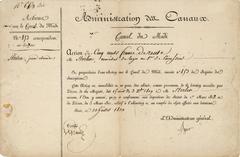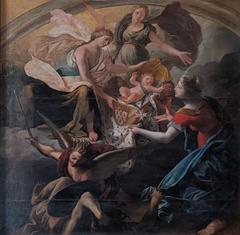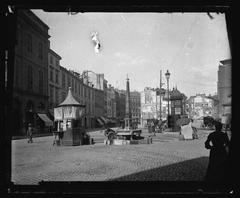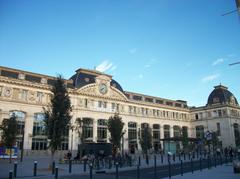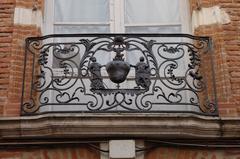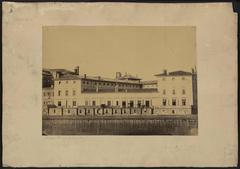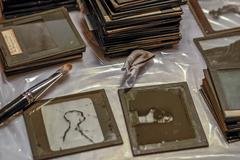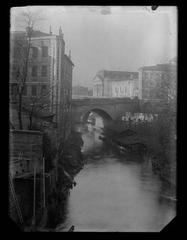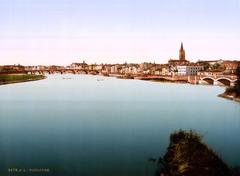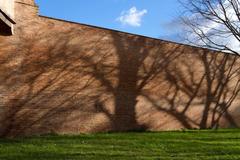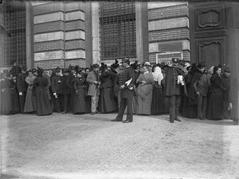Palais de Justice Toulouse: Visiting Hours, Tickets, and Complete Historical Guide
Date: 03/07/2025
Introduction
The Palais de Justice Toulouse is one of the city’s most iconic landmarks, blending centuries of judicial authority with remarkable architectural heritage. Located in the historic center of Toulouse, this monument stands atop layers of Roman, medieval, and modern history. From its origins as a Roman city gate and the medieval Château Narbonnais, through its role as the seat of the influential Parliament of Toulouse, to its current function as a working courthouse, the Palais de Justice bears witness to the city’s enduring legacy of law and civic identity (cours-appel.justice.fr; guide-toulouse-pyrenees.com).
This guide provides detailed information on visiting hours, ticketing, guided tours, accessibility, key features, and practical tips, ensuring a rewarding visit for history enthusiasts, architecture lovers, and travelers alike.
Contents
- Historical Overview
- Architecture and Heritage
- Visiting Hours & Ticketing
- Guided Tours & Special Events
- Accessibility & Directions
- What to See: Key Highlights
- Nearby Attractions
- Visitor Tips & FAQ
- Conclusion
- Official Sources
Historical Overview
Roman and Medieval Foundations
The Palais de Justice site has been a focal point of Toulouse since Roman times. Originally, it was built atop the Porte Narbonnaise, the southern gate of Roman Tolosa, and traversed by the Via Aquitania, a major Roman road. In the 12th century, the Counts of Toulouse established the Château Narbonnais on this spot, creating a formidable fortress and symbol of regional power. Portions of the Roman wall and medieval castle, now visible within the archaeological crypt, provide a rare glimpse into Toulouse’s layered urban development (cours-appel.justice.fr).
Rise of Royal and Judicial Authority
Following the annexation of Toulouse by the French Crown in the late 13th century, the site became the administrative and judicial hub for the region. In 1443, King Charles VII founded the Parliament of Toulouse, France’s first provincial parliament. The Grand’ Chambre, inaugurated in 1492, remains a focal point of the building’s historical interior (pop.culture.gouv.fr).
Renaissance to Modern Era
The medieval castle was demolished in the 16th century, replaced by Renaissance-style structures. Notable spaces such as the Chambre Dorée and Chambre d’Hercule were added between the 15th and 17th centuries. After the French Revolution, extensive neoclassical reconstruction unified the site’s judicial functions and architectural ensemble, culminating in the 19th-century buildings seen today (pop.culture.gouv.fr).
Archaeological Discoveries and Ongoing Judicial Function
Renovations and archaeological excavations in the 21st century uncovered remnants of Roman and medieval fortifications, now accessible in the archaeological crypt. The Palais de Justice continues to serve as the seat for the Tribunal Judiciaire and Court of Appeal, making it a living institution as well as a monument (hautegaronnetourisme.com).
Architecture and Heritage
Architectural Highlights
- Neoclassical Façade: The 19th-century exterior features grand columns and symmetrical lines in Toulouse’s signature pink brick.
- Grand’ Chambre: The ceremonial courtroom, with high ceilings and intricate woodwork, is a centerpiece of the site’s judicial history.
- Salons Classés: Ornate salons with gilded decor and period furnishings, protected as historic monuments.
- Archaeological Crypt: A 600 m² underground space revealing Roman gates, medieval walls, and the ancient road (cours-appel.justice.fr).
- Cour d’Assises: The main criminal courtroom, designed for solemnity and transparency.
Heritage Status
Significant portions of the Palais de Justice, including its facades, rooflines, and historic interiors, are protected as national historic monuments. Recent restoration work has enhanced both preservation and public access, particularly for special events (pop.culture.gouv.fr).
Visiting Hours & Ticketing
- Regular Access: As a working courthouse, general public access is not available daily. However, visitors can attend public court sessions during opening hours.
- Tribunal Judiciaire: Open Monday to Friday, 08:30–12:00 and 13:00–16:30 (cours-appel.justice.fr).
- Special Events: The best opportunity for in-depth visits is during the Journées Européennes du Patrimoine (European Heritage Days), usually in September.
- 2025 Heritage Days: Scheduled for September 20–21 (toulouse-tourisme.com).
- Tickets: Entry for guided tours during heritage days is free, but advance reservation is mandatory due to limited capacity.
- Booking: Reserve via the Toulouse Tourist Office website. Guided crypt tours require a paid ticket, prices set by the tourism office (hautegaronnetourisme.com).
Guided Tours & Special Events
- Duration: Tours typically last 1 hour 15 minutes.
- Language: French is standard; English tours may be available on request.
- Content: Explore the crypt, Grand Chambre, salons, and other interiors with expert commentary on history and architecture.
- Annual Events: Heritage days and occasional special exhibitions offer rare access to otherwise restricted areas (cours-appel.justice.fr).
Accessibility & Directions
- Address: 2 Allée Jules Guesde / Place du Salin, 31000 Toulouse
- By Metro: Line B, Palais-de-Justice station (toulouse-tourisme.com)
- By Bus: Multiple lines stop nearby.
- By Bike: VéloToulouse stations within walking distance.
- Parking: Very limited; public transport highly recommended.
- Mobility: Main entrance and public areas are wheelchair accessible. Some historic spaces (e.g., crypt) have uneven floors; check when booking (hautegaronnetourisme.com).
What to See: Key Highlights
Archaeological Crypt
- Porte Narbonnaise: Remains of the Roman city gate.
- Château Narbonnais: Medieval foundations and walls.
- Roman Road: Traces of ancient urban infrastructure.
- Access: Only by guided tour during special events.
Grand Chambre & Historic Interiors
- Grand Chambre: Oldest courtroom, dating from 1490, still in use.
- Salon Doré & Salon d’Hercule: Lavish Renaissance and Baroque interiors (Monumentum).
- Salle des Pas Perdus: Grand staircase and vestibule with period decor.
Exterior Architecture
- Façades: Blend of Gothic, Renaissance, and neoclassical styles, especially photogenic from Place du Salin and allées Jules-Guesde.
Nearby Attractions
- Place du Salin: Vibrant square with shops and cafés.
- Temple du Salin: Historic Protestant church.
- Hôtel de Felzins & Hôtel de Bagis: Renaissance mansions nearby.
- Saint-Étienne Cathedral: Notable religious and architectural site.
- Jardin des Plantes: Botanical garden within walking distance.
- Capitole de Toulouse & Basilica of Saint-Sernin: Essential stops for cultural travelers.
Visitor Tips & FAQ
Security & Protocol
- Screening: Airport-style security at entry; ID may be required.
- Conduct: Silence and respectful attire expected due to ongoing court sessions.
- Photography: Permitted outside; strictly prohibited inside, especially in courtrooms (sainte-chapelle.co).
- Facilities: Restrooms available; no onsite café or shop.
Frequently Asked Questions
Q: When can I visit the Palais de Justice?
A: Public access is limited. Guided tours are offered during special events (e.g., European Heritage Days). Court sessions are open to the public on weekdays.
Q: Are tours free?
A: Heritage day tours are free with advance booking. Crypt tours require a paid ticket.
Q: Is the site accessible for those with reduced mobility?
A: Most public areas are accessible; some historic zones may require assistance.
Q: Can I take photos?
A: Only outside. No interior or courtroom photography.
Q: How do I get there?
A: Use Metro Line B (Palais-de-Justice), city buses, or VéloToulouse bikes.
Conclusion
The Palais de Justice Toulouse offers an unparalleled journey through the city’s legal, architectural, and urban history. While daily access is limited due to its function as a courthouse, special guided tours—particularly during European Heritage Days—reveal hidden archaeological treasures and magnificent interiors. Plan your visit in advance, respect security protocols, and combine your experience with other Toulouse historical sites for a rich, immersive exploration of the Pink City’s heritage.
For more travel inspiration, updates, and audio guides, download the Audiala app and follow local tourism channels.
Sources
- Palais de Justice de Toulouse: History, Visiting Hours, Tickets, and Visitor Guide to This Iconic Toulouse Historical Site
- Palais de Justice de Toulouse, Guide Toulouse Pyrénées
- Crypte Archéologique du Palais de Justice, Haute Garonne Tourisme
- Palais de Justice Toulouse: Visiting Hours, Tickets, and Historical Insights, Cour d’appel de Toulouse
- Toulouse Tourist Office – Palais de Justice Events and Tickets

